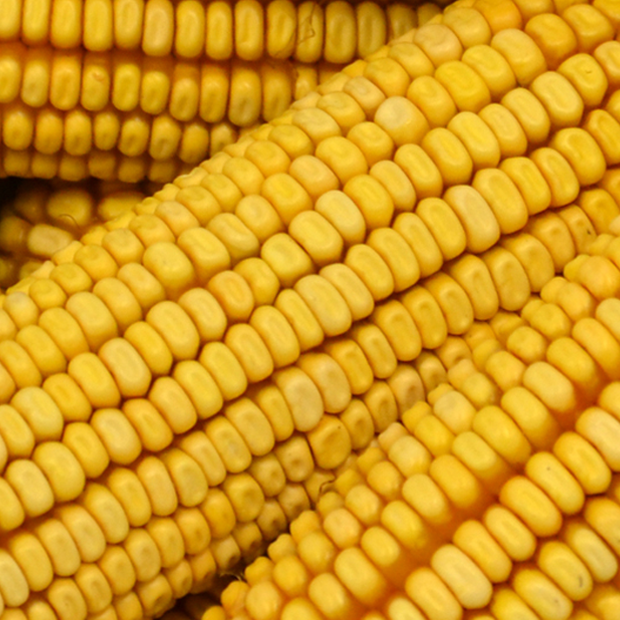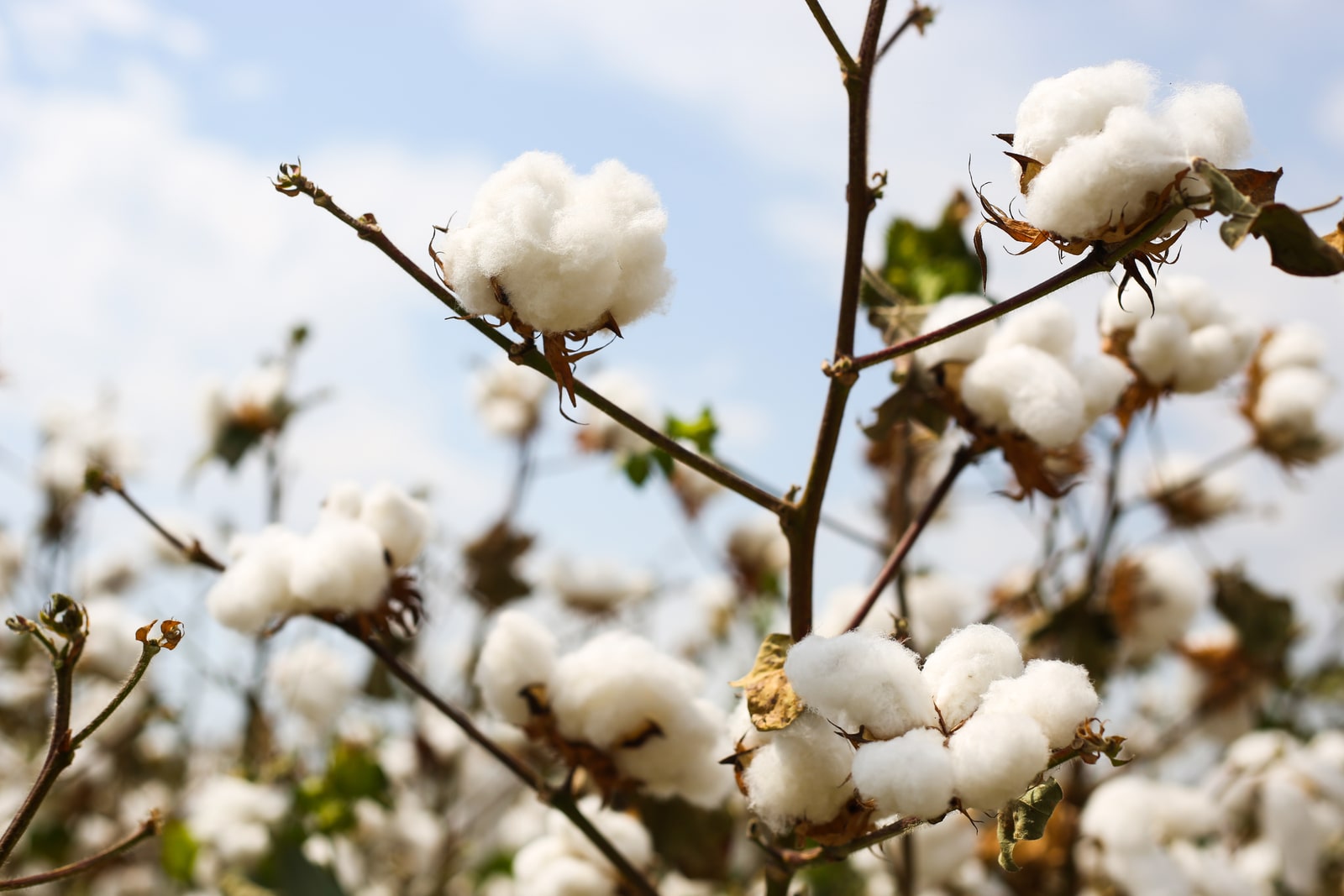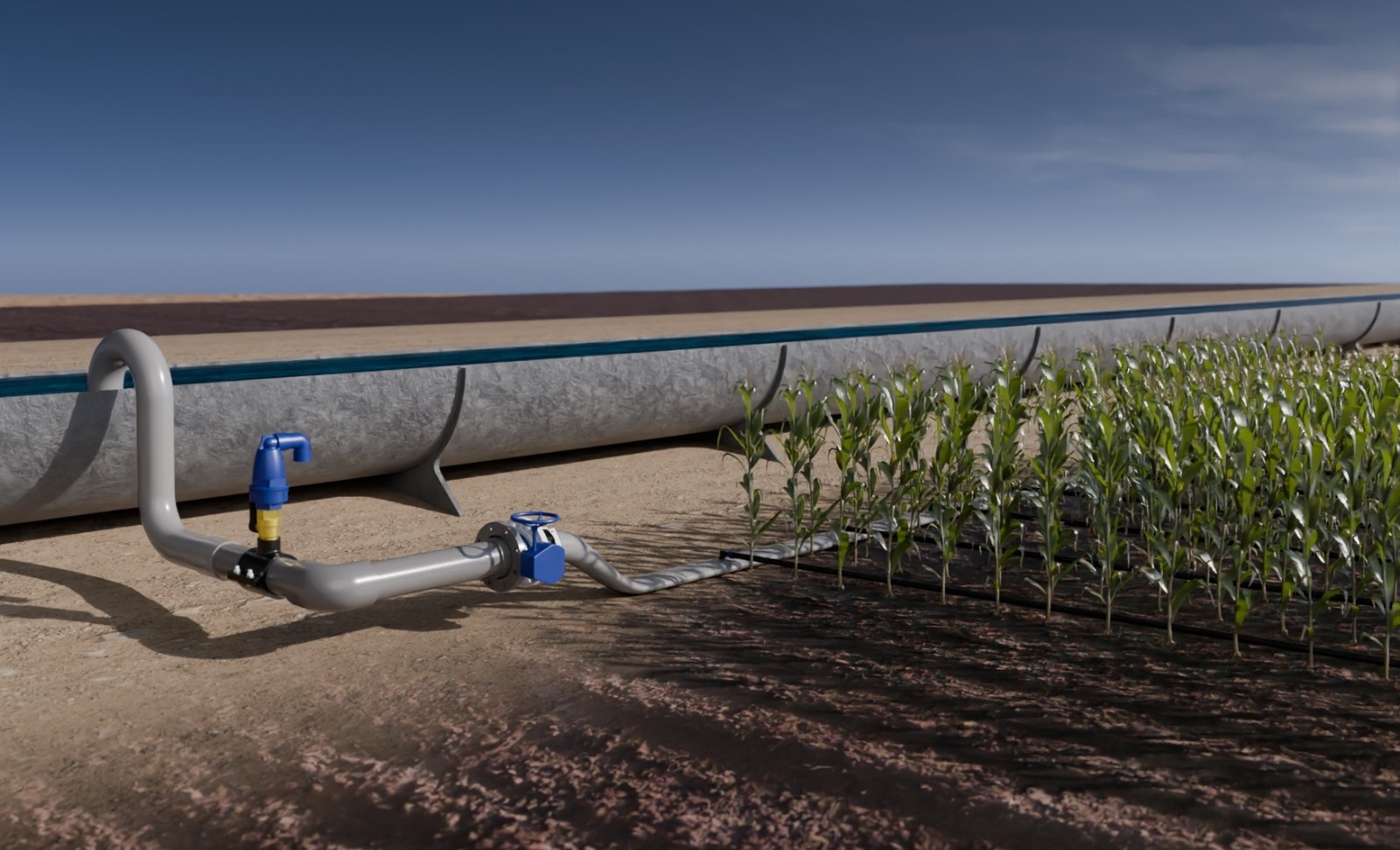
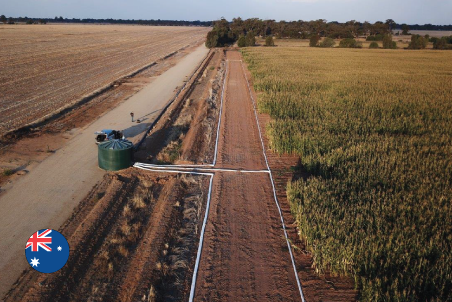
No filters and pumps needed
Netafim drippers have high clogging resistance eliminating the need for additional filtering and pumps.
During a radiation frost, crops are continuously sprayed with water above the canopy, that turns to ice. The freezing process releases latent heat which creates a micro climate and warms the air near the trees. For every 1 gram of water, 80 calories of energy is released. In addition, a thin layer of ice is created on the leaves that continually forms and melts so that water inside the plant cells will not freeze and the air surrounding the plant will not drop significantly below freezing point.
The frost protection system should be activated when temperatures start to fall below 2.5°C. The shutdown time is only in the morning after the frost event, when all the ice on leaves and trees is melted.
Explore our frost protection offering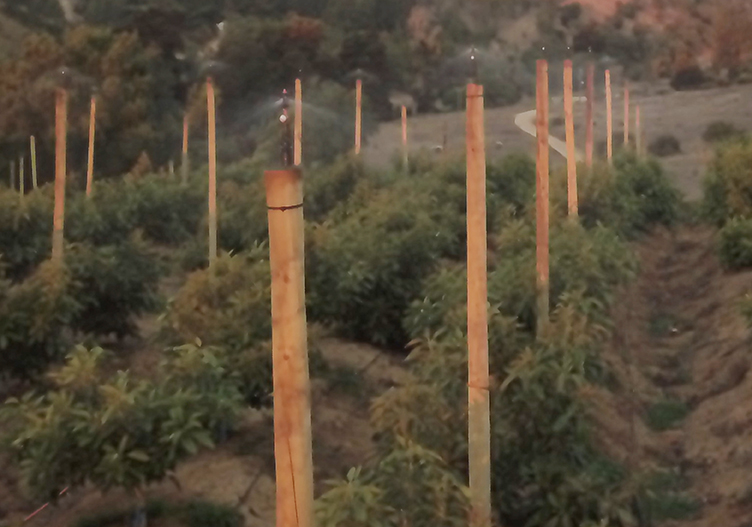

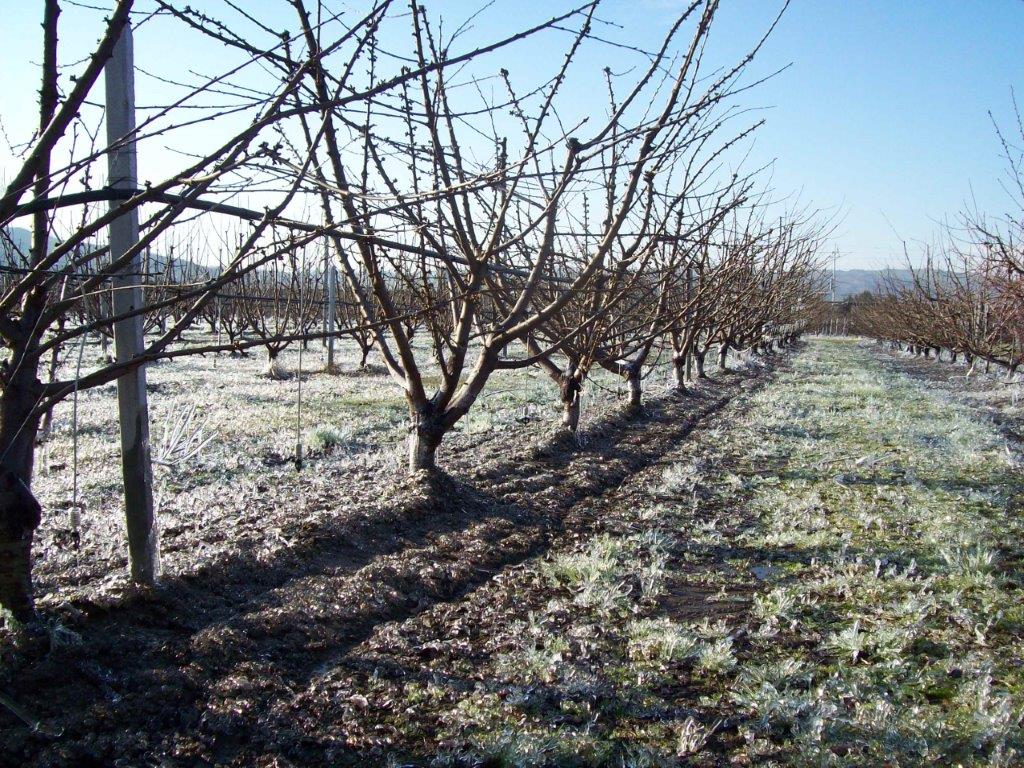
Spring frost (or radiation frost) is particularly harmful to fruit trees. It typically happens during the springtime when a combination of cloudless nights with little or no wind, low humidity and low temperature generate sub-zero conditions for an extended period of time. As the sun sets, heat is irradiated from the ground and reflected into the atmosphere. On regular days, this heat will protect the tree from exposure to low temperatures that are common during spring. But if there are no clouds to slow down this flow of energy, and no wind to mix air layers, a cold air layer will form close to the ground while hot air will rise up to the higher parts of the atmosphere leaving temperatures near the surface to drop below freezing point.
Damage from spring frosts may range from damaged buds or flowers, ruined fruit, poor crop quality to even full tree loss, and can be devastating to farmers and the local economy. The good news is that there are ways to mitigate and control it.
Click here to prevent frost damage in your plotA frost occurs when the temperature at ground level falls below 0°C. In a frost event, the water in between plant cells freezes. This process draws water out of surrounding cells, causing dehydration of plant tissue. The formation of sharp ice crystals, and the anomalous expansion of the water volume between the cells damages the tissue and causes the cells to burst. If such an event is followed by a sunny morning, affected leaves will suffer from oxidation and sun burn which will amplify the damage.

Transforming traditional flood irrigation to an efficient gravity-powered drip irrigation system.
Netafim's LES offers farmers an efficient, sustainable irrigation solution, ensuring uniform water distribution across the entire field through utilizing the force of gravity.

No filters and pumps needed
Netafim drippers have high clogging resistance eliminating the need for additional filtering and pumps.
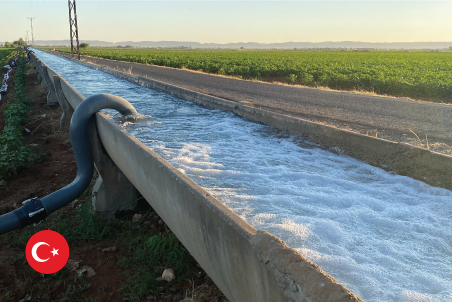
Integrates drip technology into existing flood infrastructure
Making it easily adaptable to flood water sources, such as: open canals, reservoirs and bore-holes.
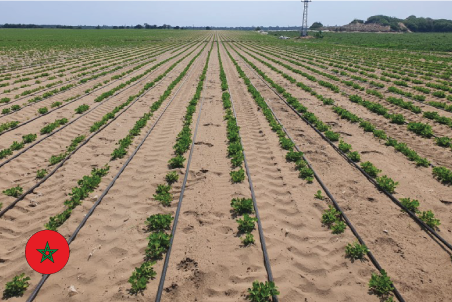
Leveraging the natural topography
LES provides farmers with a cost-effective solution for irrigating their crops. This enables water delivery to areas facing scarcity and limited energy resources, harnessing gravity and eliminating the need for pumps. This not only reduces energy costs but also eliminates the necessity for establishing pressurized infrastructures.

An all-in-one modular irrigation system, powered by gravity, that doesn't require any pumping or filters, and incurs no energy expenses.

An extended system with filtration and fertigation and boosting pump that is powered by solar energy.
